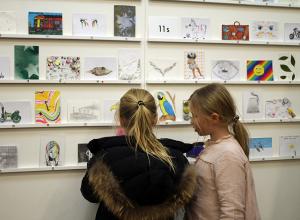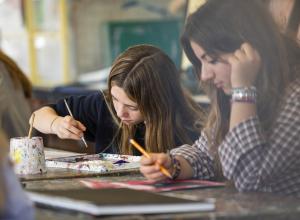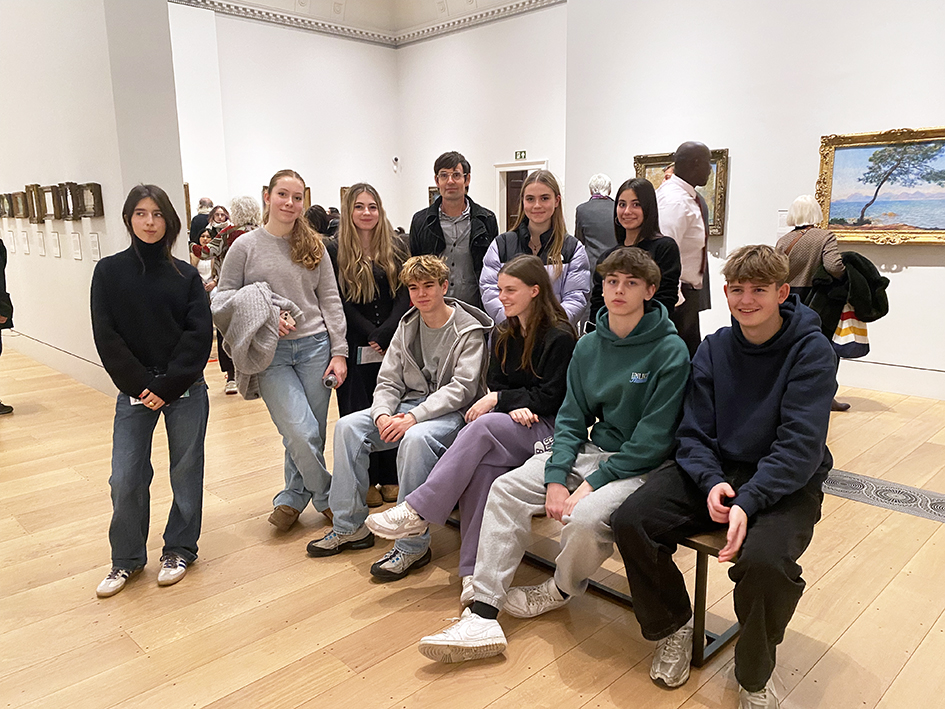
Head of History of Art, Ms. Hannah Kroes, invites Lower Sixth Art students to select one exhibit from this year’s Turner Prize and present their case for why it deserved to win.
Lower Sixth Art and History of Art students recently visited the Courtauld Gallery (above) and Tate Britain where they viewed the Turner Prize exhibition, a key moment in the contemporary art calendar. For many of them, it was their first time engaging with such diverse and challenging works in person, and the experience sparked some lively debate. As part of the visit, each student chose one artist from the shortlist and wrote about why they believe that artist should win.
For those unfamiliar, the Turner Prize is one of the most prestigious awards in contemporary art, established in 1984 to spotlight innovative and thought-provoking British artists. Each year, four artists are shortlisted for their contributions to the art world, showcasing their work in an exhibition that invites both admiration and controversy. This year’s shortlist features an exciting mix of practices and ideas:
Pio Abad
Pio Abad’s work (below) delves into cultural loss and colonial histories, often reflecting on his upbringing in the Philippines. Using drawings, etchings, and sculptures, he reimagines artifacts from British museums, revealing hidden or overlooked histories and making connections to contemporary life.
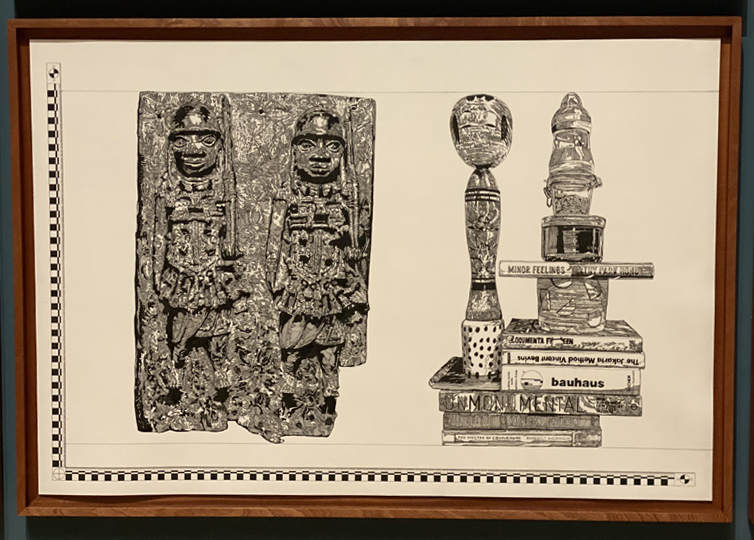
Pio Abad’s work criticises historical events, power, and their impact. He often focuses on themes of dictatorship, political violence, and colonialism, particularly in the context of the Philippines.
Celeste, Lower Sixth Art student
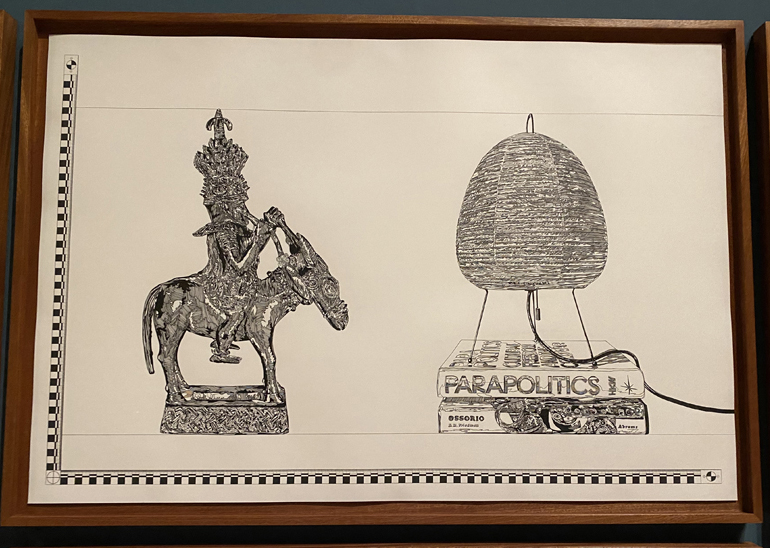
Claudette Johnson
Claudette Johnson creates powerful figurative portraits of Black women and men (below), rendered in pastels, gouache, and watercolour. Her work confronts the marginalisation of Black individuals in Western art history, often drawing from personal relationships to present intimate and dignified portrayals.
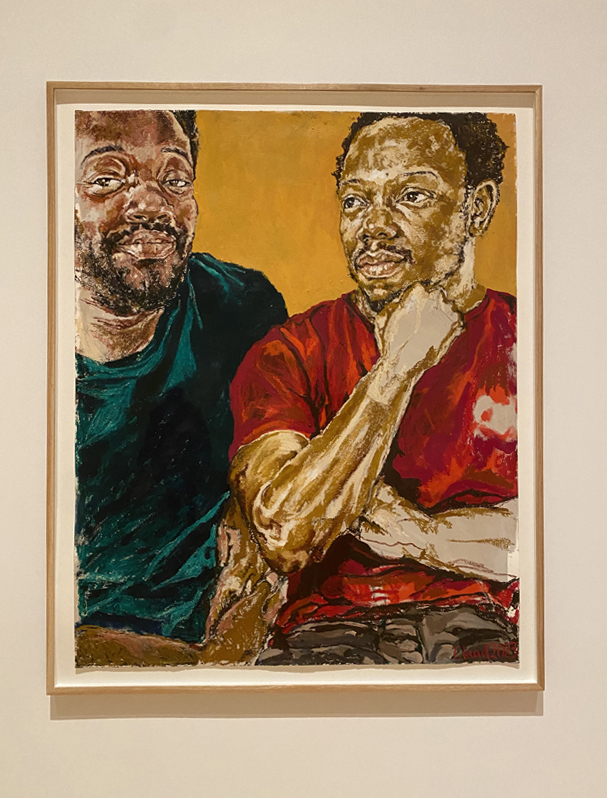
Her pieces have a deep meaning that you can understand by just looking at them. An example of this is her touching portrayal of George Floyd. Her works created an emotional and touching experience for me and her loose yet controlled style added texture and depth to her paintings.
Elodie, Lower Sixth Art and History of Art student

Jasleen Kaur
Jasleen Kaur transforms everyday objects into installations that question traditions and inherited narratives (below). Her works include an automated harmonium, kinetic worship bells, and a red Ford Escort covered in an oversized doily, creating immersive sonic environments that explore history and mythology.
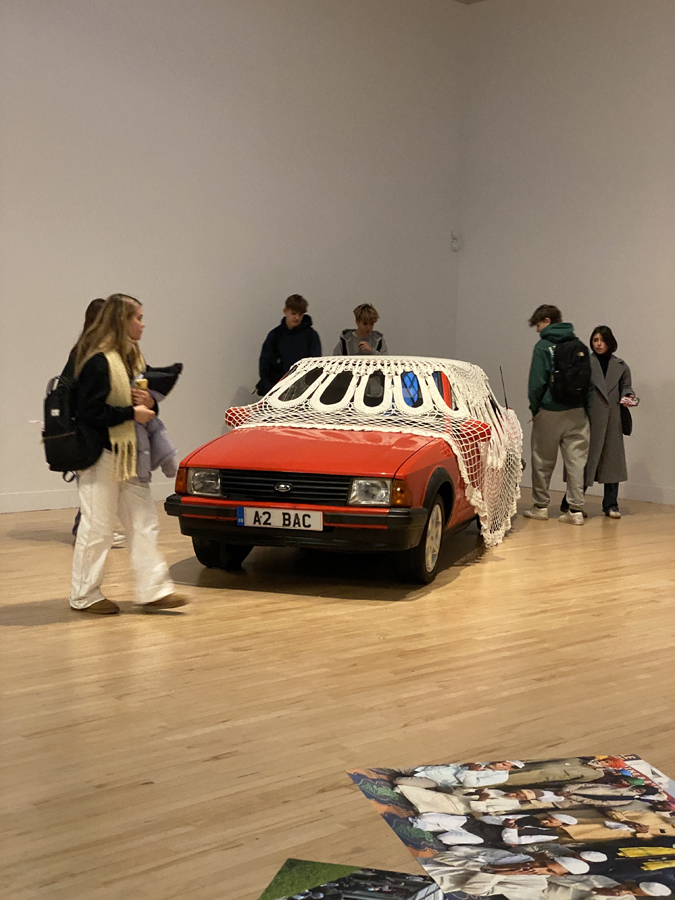
The conceptual installations of some of the artists were challenging for our students, who preferred the more legible messages in Johnson’s beautiful drawings and paintings.
Head of History of Art Ms Hannah Kroes
Delaine Le Bas
Delaine Le Bas creates monumental immersive environments filled with painted fabrics, theatrical costumes, and sculptures (below). Her work draws on the rich cultural history and mythologies of the Roma people, addressing themes of death, loss, and renewal.
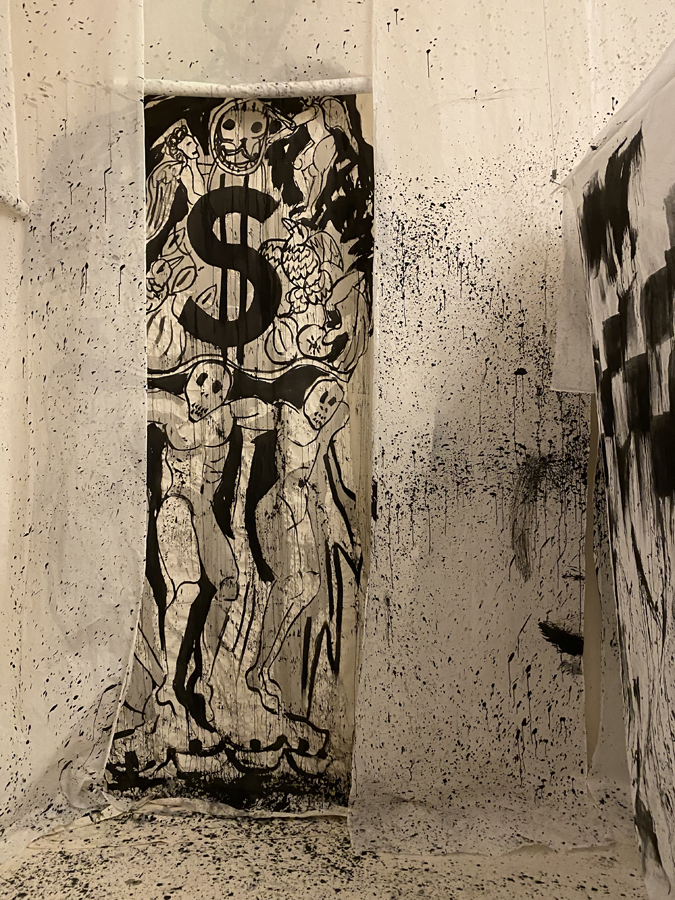
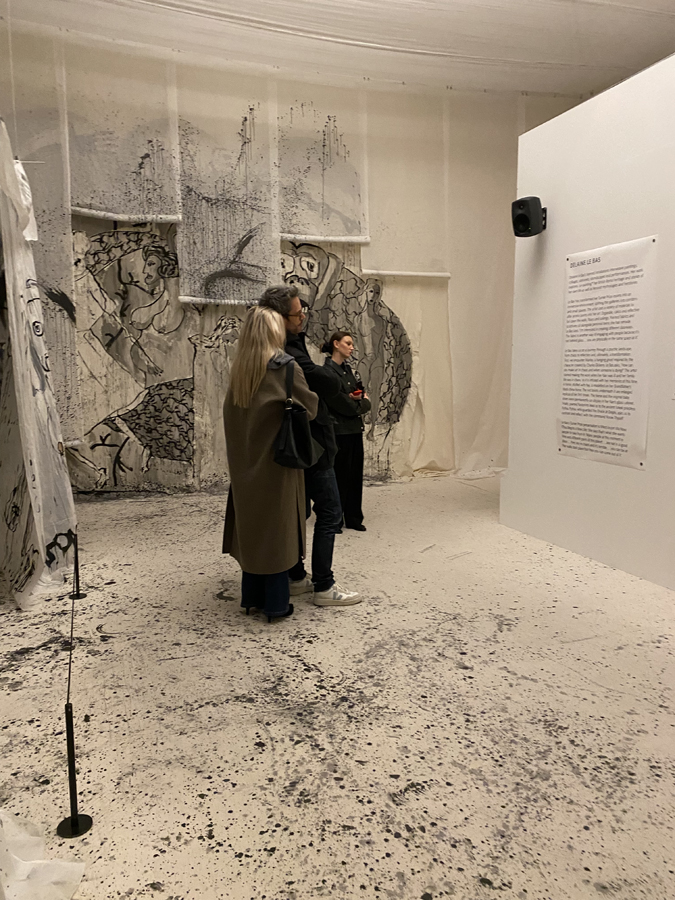
Lower Sixth Former Leonor is most impressed with Pio Abad’s work, convinced that his critical approach deserved this year’s prize:
"Personally I believe Pio Abad should win the Turner Prize. Abad’s work criticises historical events, power, and their impact. He often focuses on themes of dictatorship, political violence, and colonialism, particularly in the context of the Philippines. His ability to explore these complex histories and present them in beautiful and artistic ways in my opinion is Turner Prize-worthy art. Pio Abad blends sculpture, installation and textiles. I believe he uses objects and their histories to express broader ideas about memory, identity, and cultural loss. Looking around the exhibition, I felt most connected to Pio Abad’s art and loved all the intricate detail."
However, the other Lower Sixth students I talk to are united in their love for Claudette Johnson’s work (below). They are all impressed with her artistry, style and the meaning behind her portraits and they felt that she should win.
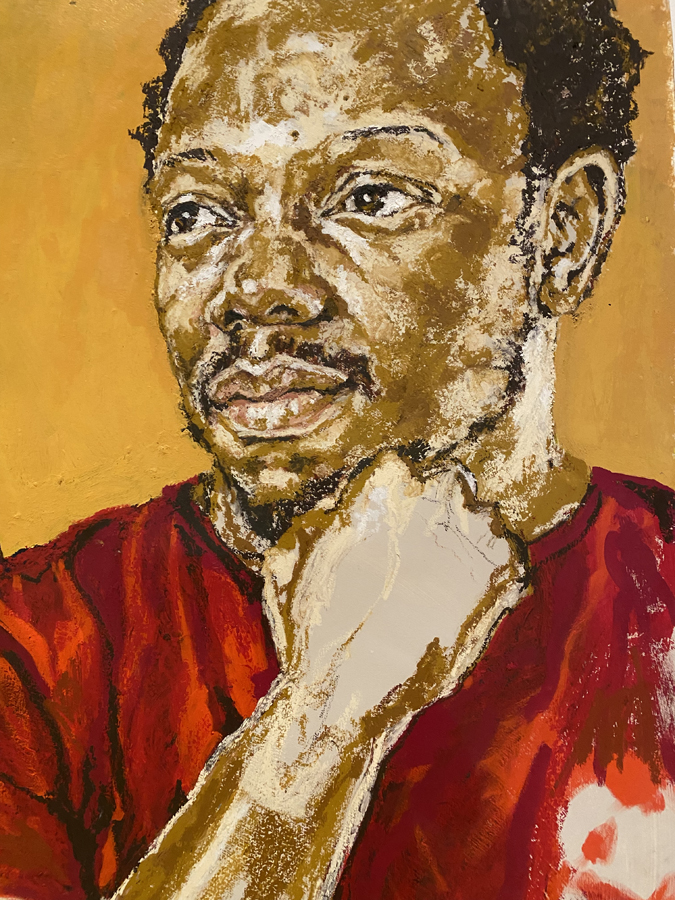
Celeste explains her reaction to Johnson’s work:
"Johnson creates striking figurative portraits of Black women and men using pastels, gouache and watercolour. Her art addresses the marginalisation of Black people in Western art history, while conveying both depth and humanity through her striking portrayals of the Black community. I was especially moved by the way Johnson creates character and personality in her subjects through distinct colouring and stylistic yet detailed marks, producing an original and radiant piece of work. Furthermore her thoughtful use of empty space is equally important, as it draws our attention to the significance of what is left unsaid or unseen."
Elodie adds: "Her pieces have a deep meaning that you can understand by just looking at them. An example of this is her touching portrayal of George Floyd. Her works created an emotional and touching experience for me and her loose yet controlled style added texture and depth to her paintings."
Siri adds: "Her large scale figurative drawings in oil and oil pastel are absolutely stunning and showcase her mastery of perspective and scale. My personal favourite was her oil pastel piece on brown cloth titled ‘Pieta’- it shows a black mother cradling her son's body, framed by the words ‘every mother was called when he called for his mother’. I found this incredibly meaningful, especially after reading that she was inspired by the BLM protests following George Floyd’s death- beautifully and unapologetically conveying a Black presence so often misunderstood in Western art."
Finally, Phoebe agrees, commenting on the visual qualities of Johnson’s work:
"I really appreciated the layers and layers of marks she made, all combining together to make an impressive face or body. I also liked how she left spaces of paper to show through. I prefer her artwork compared to that of the other artists because you don’t need to have any prior knowledge or information to understand it, you can just look and immediately admire. Two of the other artists' works came in the form of massive immersive installations, that were very confusing if you didn’t know what they were. Sometimes this makes art less accessible to people that just want to look and not read. In contrast to this, Claudette Johnson's work can be easily interpreted by looking at the emotions and colours."
The conceptual installations of some of the artists were challenging for our students, who preferred the more legible messages in Johnson’s beautiful drawings and paintings.
The winner of the Turner Prize was announced this week as Jasleen Kaur, who was responsible for the most iconic image of this year’s prize, the red Ford Escort covered in an oversized doily. While our students might be disappointed that Claudette Johnson was not the 2024 victor, they have been richly inspired by all four of the artist’s approaches as they begin to develop their own projects.

The winner of the Turner Prize was announced this week as Jasleen Kaur, who was responsible for the most iconic image of this year’s prize, the red Ford Escort covered in an oversized doily

